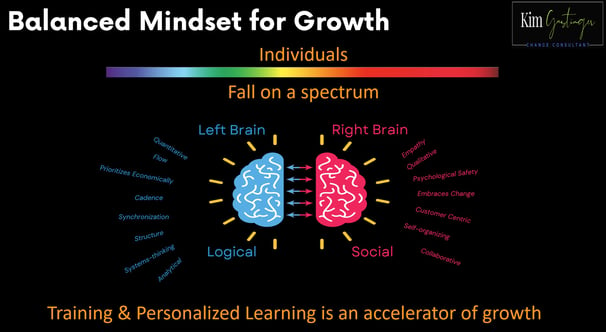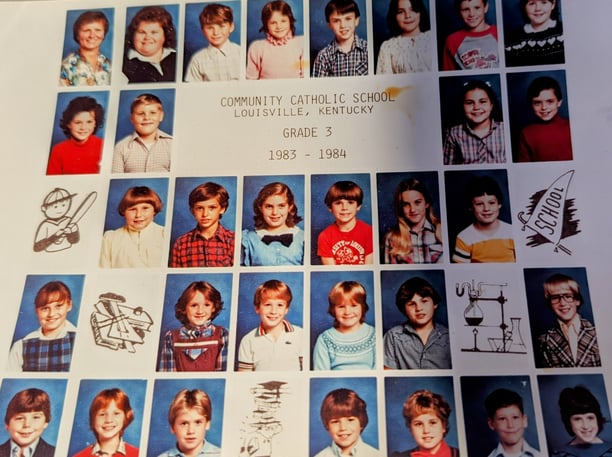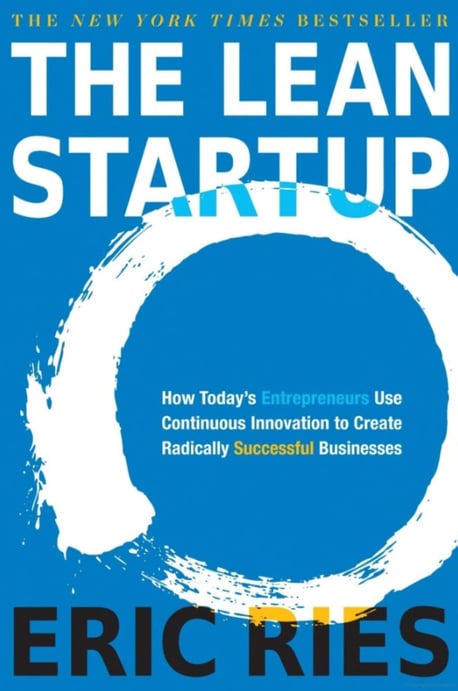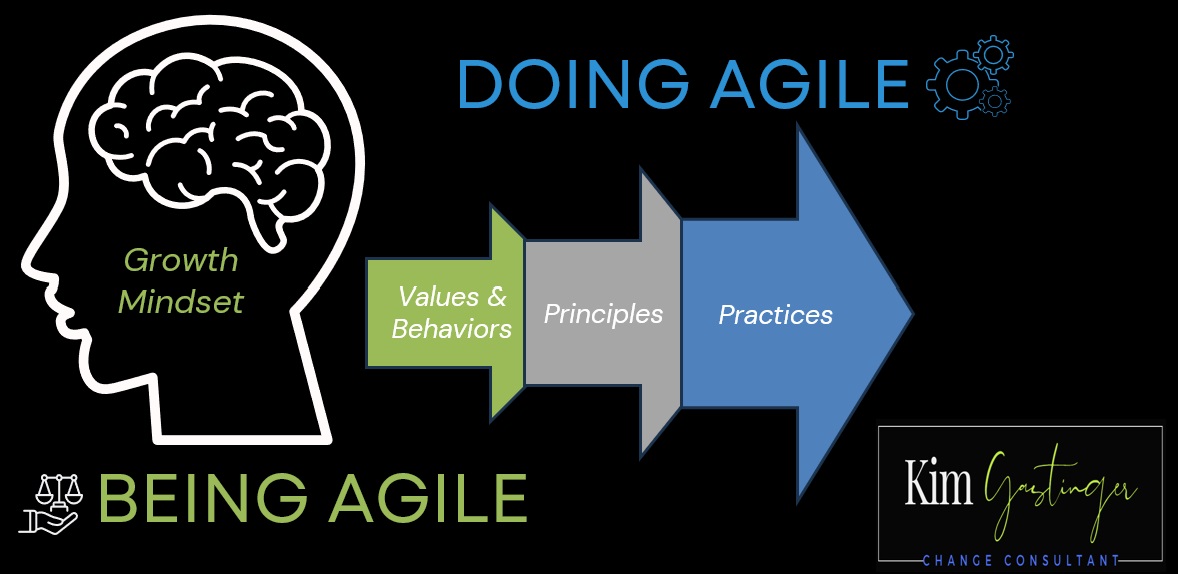Trimming the Fat
Today's business risk transcends industry sector and impacts companies of all sizes. To remain competitive while also sustaining profitability, leaders MUST embrace a lean startup philosophy. This week, I share two examples from my personal and professional life to discuss lean-agile mindset and entrepreneurship as background to Eric Ries thought leadership in his book "Lean Startup".
Kim Gastinger
5/16/202410 min read


In the first quarter of 2024, commercial bankruptcies increased 22% with the highest reporting of open market exits during the same period. An estimated 90,000 workers were laid off in March 2024. Business leaders are now being held accountable to "make do with less" by maximizing the amount of work NOT done using prioritization based on high value returns.
Navigating business management challenges created by a post-pandemic economic climate have created "conditions of extreme uncertainty" because it is no longer sufficient for a company to just produce innovative products and services when margins for individual discretionary spending shrink in the wake of the rising cost of living.




The first series of summer practice sessions in our parking lot curated accuracy and forced teamwork. Coach Pat did an exceptional job bringing the team up to speed by quickly teaching us the basic rules of play. And once we understood the game, learning about our strengths and weaknesses together and individually was an accelerator to developing role-based skills.
I was underprivileged and accustomed to being picked on for circumstances that were beyond my control. Our first game was heavy with cockiness as players, coaches and fans prematurely "counting" us out as low hanging fruit...easy picking for the "W". My team always showed up to games as the "away" team with the opposing "home" teams from other schools often making fun of our "ghetto" uniforms. I can only imagine how stark the differences were from the bleachers seeing the teams were side by side.
I am not sure that they could appreciate as much as we did how blessed they were to wear "official" uniforms or have a gym for practicing. I am pretty confident they never conceived playing on a surface like asphalt. Being bullied was powerful inspiration for me to focus on improving circumstances that were within my control….like learning the game, understanding sports strategy and practicing sets and serves. One of my favorite memories as an athlete was the dopamine pump from winning. Victory always seems sweeter when earned and achieved in spite of hurdles that would have been an acceptable "excuse" for losing. I am a competitive person and always eager to grow but I would be a liar if I tried to pass off that I was primarily propelled by intrinsic motivation. In reality, I grew as a technical player out of sheer self-preservation and necessity. Let’s be real here…there is no greater incentive to improve volley or passing skills than "road rash". Landing accurate serves became a strategy to avoid raggedy knee pads pocked with holes from sliding on hot asphalt to save the return.
As an adult, I am proud to say that people were sorely mistaken in underestimating the fire, drive and tenacity of a new volleyball team from a poor school in Louisville's Portland neighborhood. Despite the hurdles on our journey, we learned quickly. And I individually gained an advantage by studying specific players during games. I was a very accurate server with predictable strategic placement skills honed from hours upon hours of extra practice serving a dulled volleyball against my parents' 6-foot privacy fence in the backyard. I watched intently during games to get a sense of how the opposition was performing so I could adjust my serve as needed by targeting "weaker" or "flustered" players. There is nothing more satisfying than giving an "FU" to a bully by winning instead of resorting to cheating or retaliation. My team was a "cinderella" story, advancing in tournament play and winning the championship that first season.


And while a climate controlled gym or sexy, vibrant dry-wick brand name jerseys would have been awesome, clearly these tools were not required to be successful. Community Catholic School didn't have those luxuries but the team continued to grow, mature and win volleyball games because we had the right PEOPLE with the right MINDSET who were committed, coachable and guided by a motivated teacher eager to share her years of experience playing the sport.
Portland has a rich and long history as a local neighborhood in Louisville's western side of the city. It was established in 1811, it was originally the largest of the major settlements in Kentucky and Indiana at the Falls of the Ohio River.
I am unable to locate a volleyball team picture from my childhood. Cameras, film and developing pictures were expensive luxuries in the 1980's that my parents could not afford. This is our "official" class picture of my third grade class. My volleyball teammate, Bridget Goodman (now Yates) would eventually serve as the head coach for over twenty years at Spalding University.
Success ACHIEVED because of a PEOPLE advantage despite limited TOOLS
In 1999, I officially became an "entrepreneur" in partnership with my ex-husband when we launched on Y2K, Mobile Medical Imaging Inc (a mobile x-ray service) in Louisville, KY. For my well-rounded partner being a small business owner was very natural since his family had owned businesses and eafer to mentor their son who was formally educated, trained and credentialed in radiology. Unlike my in-laws, my dad was a Louisville Police Officer and the closest experience I had to entrepreneurship was working the school Bingo on Tuesday nights for tips. Although I did not have formal exposure to business ownership or even healthcare, growing up poor taught me to be resourceful, creative, innovative and LEAN.
Ironically twenty years after I started my journey as an lean healthcare startup entrepreneur, I would embark on a new professional growth journey learning about agile at scale. In the wake of my success leading a high visibility enterprise interoperability platform implementation in 2019, there was growing demand overshadowed by intense leadership pressure to keep the momentum going. The team had no choice but to find a way to scale beyond our single agile team. I met with various leaders in other progressive areas who were using a framework called SAFe® for launching teams of agile teams. Inspired to learn more, I attended my first SAFe® Scaled Agilist class in 2019. The thought leadership fueled my curosity because I had a burning desire to bridge principles and values strategy to tactical so I could learn HOW to implement agile at scale. By the end of the year, I had completed training and earned my credentialing with SAFe® as an SPC (Scaled Agile Practice Consultant). Over the last five years, I have continued to learn, practice and experience in real-time the concepts borrowed from and inspired by thought leaders like Eric Ries in his New York Times bestselling book "The Lean Startup" describing "How Today's Entrepreneurs Use Continuous Innovation to Create Radically Successful Businesses".
"STARTUP" centerS around PEOPLE and their EXPERIENCE
Entrepreneurs are everywhere --> "HUMAN institution" developing new products/ services in conditions of high risk
Entrepreneurship requires management --> "a new kind of management" because of risk
Entrepreneurs validate learning --> "how to build a sustainable business"
Entrepreneurship is cyclical (Build-Measure-Learn) --> turning ideas to products, measure customer response, and deciding pivot or persevere
Entrepreneurs measure success with Innovation Accounting --> accountable by measuring progress of objective milestones for prioritized work
It is a very common practice for companies with large discretionary spending budgets to double down on misguided transformation strategies that assume expensive tools/technology will solve for a people problem. Growing people and evolving process are relatively low cost investments in terms of time, agility and cost and yield fast feedback. It is much quicker to adjust processes or messaging than technology to incorporate necessary improvements. I would argue that in our current economic state with rising costs of doing business, successful businesses of any size must become more lean-oriented and conservative about controlling administrative overhead costs in order to maintain margins and meet financial targets. And the reality is that technology can be costly and if implemented incorrectly creates waste or roadblocks to progress. Just because a company has financial resources available to purchase consulting or tools does not mean they should make that investment, particularly if foundational work is rooted in people like decision-making leaders who need to grow their mind and improve their behaviors.
Are you asking yourself "why is she opposed to investing in technology"? or "why is she not recommending using external consultants"? I do highly value technology and consulting since these resources can prove to be effective enabling TOOLS for growing organizations. But if organizational problems are rooted in people or cultural challenges, then an organization will never successfully achieve their unique transformative objectives by investing in latest technology or generic plug and play theoretical models/frameworks recommended by consultants. Afterall, who uses a tool? PEOPLE.
Radical transformation must start with growing HUMAN resource leaders minds to perceive and think so they can BE AGILE. Coaching/mentoring/training equips the leader to change behaviors by modifying or reinforcing actions that demonstrate lean-agile values and principles so that they are DOING AGILE. People investments are tricky to financially quantify, thus disappointing leaders who expect a measure of progress using conventional financial measures like Net Present Value (NPV) or Rate of Return (RoR). Actionable and relevant reporting on people progress must use change oriented measures to tell the right story with data. Lean-agile minded entrepreneurial leaders treat their "human institution" as customers by honoring the human experience. Making change a reality is a personalized journey that could vary by individual. In a future blog post, I will introduce and discuss planning, implementing and managing the PEOPLE side of change with metrics and reporting on relative objective milestones.
An incremental investment in people could have exponentially high rates of return for any type and size of organization
Growing people requires INNOVATION, creativity, & personalization to maximize individual change


Business risk has transcended industry sector and impacts companies of all sizes. Consumer technology demands will continue to necessitate that business investments keep up with speed of technology with change driven by rapid pace of market demands. To remain competitive while also sustaining profitability, leaders MUST embrace a lean startup philosophy to lead sustainable businesses.
My philosophy on Troika is optimization and high performance as a benefit from balancing three aspects of change: people, process and tools. Check out https://kimgastinger.com/about-me to learn more about Troika Change Architecture and my philosophy on designing and managing transformative change. This post is the first blog post in a series of four topics on Leadership Mindset. In total, I will discuss (4) concepts foundational to care for "people" aspects of transformative change starting this week with MINDSET and lean start-up thinking. In future posts, I will explore behaviors and tools.
A lean-thinking perspective was organically instilled in me very early in life because my life circumstances dictated that I learned to make "do" with the limited resources that I had available to me. I lived in a GenX household with only one working parent who often times picked up extra jobs to make "ends meet" or pay for my private grade school education at our local parish school located in an economically challenged community with limited resources.
My first formal "teaming" experience was in third grade when I started playing volleyball on our newly formed girls' team. My school did not have a gym available to use, so practices were held on the black asphalt of our school parking lot. The volleyball net and a handful of regulation volleyballs were purchased with the proceeds of parent-led Booster club raffles. The first season, our "uniforms" were lovingly handcrafted by volleyball moms who gathered, crafting iron-on white letters/numbers to cheap royal blue Hanes t-shirts purchased in bulk at a local chain store. My classmate's mom who had played volleyball for many years volunteered her time to teach us game rules of play.
Mobile Medical Imaging, Inc. was a mighty and powerful team of two people who were hungry to succeed but moderately conservative in taking unecessary risks because we had zero discretionary funds for uncontrolled spending. With a $25,000 bootstrap investment from my father-in-law, we used seed money to purchase the bare minimum equipment needed so we could pay for fees associated with inspections, filings required for compliance with federal, state and local regulations. I used my strengths as a paralegal and skills learned from high school Travel & Tourism in customer service, marketing, process standard operating procedures, and project management to focus on administrative operations to legally "organize" the business. My partner used his strengths in healthcare and radiology by focusing on health quality, regulatory compliance, medical governance and technical aspects of radiology.
We learned so much in that first year of being small business owners that we carried forward, inspiring incremental change to our future state business model. That lean start-up grew iteratively WHEN we had capacity and resources to support the demand for scale…eventually offering a variety of different mobile services beyond plain film x-rays to different modalities beyond our initial core customer base. Within two years of launching, I brokered an acquisition deal with a larger out of state competitor for a lucrative partial ownership in a new partnership with their financial investment to upgrade our office technology and equipment to digital radiology. We had the people, mindset, behaviors and practices in place to effectively use enabling technology for making operations more efficient and cost effective while supporting additional expansion necessary to meet the demand of our growing customer base in occupational, chiropractic, and home health.
MMI, Inc had no "fat" to trim because we were lean by necessity and clearly didn't have the financial resources to invest in expensive technologies or an external business consultant to help guide us on our new journey as entrepreneurs. Candidly, today I have heavy personal bias because my 20-years corporate professional experience has jaded my perspective on the efficacy of consulting. I am not stereotyping all consultants or making a judgment about any particular consulting practice or enabling technology/tool. I personally value strategy but understand that tactical execution is necessary because while theory and construct is inspiring, theoretical does not deliver results. Technology has high value only when implemented in combination with effective use of the tool by people following standard processes/procedures. Generally speaking, the consulting "game" incentivizes consultants to NOT solve problems, which is the anti-thesis of my personal and professional philosophy. I can't say with confidence that if we had made high dollar digital radiology or consultant investments out the gate that there would have been a substantial return on investment or result superior to the progress made on our own. Our mindset inspired determination to survive by doing, learning and adjusting. If there are no quantifiable results, then how does a leader measure return on investment?
